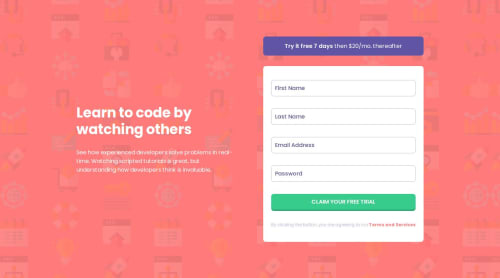Intro component with sign-up form

Solution retrospective
I’m most proud of my ability to stay focused and problem-solve effectively, even under pressure. For example, when working on a recent project, I was able to meet tight deadlines while maintaining the quality of my work. I’m also proud of my ability to collaborate well with others, especially when tackling challenging tasks.
Next time, I would try to delegate more tasks earlier in the process to allow more time for refining the details and conducting additional testing. I tend to take on a lot of responsibility, and while it’s rewarding, I’ve realized that sharing the workload can lead to even better results. This would also help me manage my time more effectively.
What challenges did you encounter, and how did you overcome them?One of the biggest challenges I encountered was balancing multiple responsibilities, particularly when I had tight deadlines for both school projects and extracurricular activities. At first, it felt overwhelming trying to juggle everything at once.
To overcome this, I prioritized my tasks based on their urgency and importance, breaking down larger projects into smaller, more manageable steps. I also learned to communicate more effectively with my teammates and professors, asking for help or clarification when needed. By staying organized and focused, and by using tools like task lists and calendars, I was able to stay on top of everything and deliver quality work on time.
What specific areas of your project would you like help with?I would like help with optimizing the user interface and improving the overall user experience of the project. Specifically, I'm looking for advice on how to make the forms more intuitive and user-friendly, ensuring that validation and error messages are clear and helpful. Additionally, I'd appreciate feedback on how to implement better responsiveness across different devices, as well as suggestions on how to optimize the code for faster load times.
Please log in to post a comment
Log in with GitHubCommunity feedback
No feedback yet. Be the first to give feedback on AlexCristea2007's solution.
Join our Discord community
Join thousands of Frontend Mentor community members taking the challenges, sharing resources, helping each other, and chatting about all things front-end!
Join our Discord